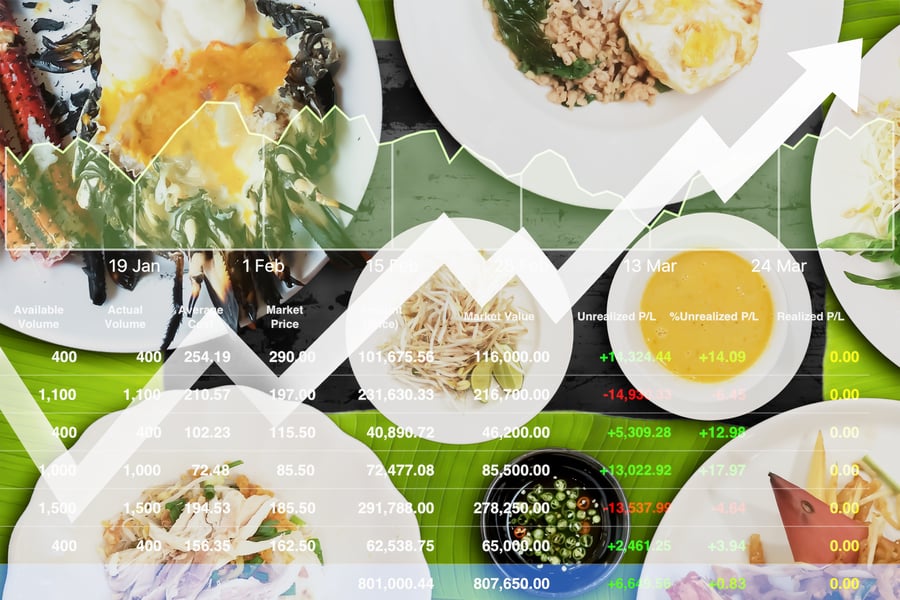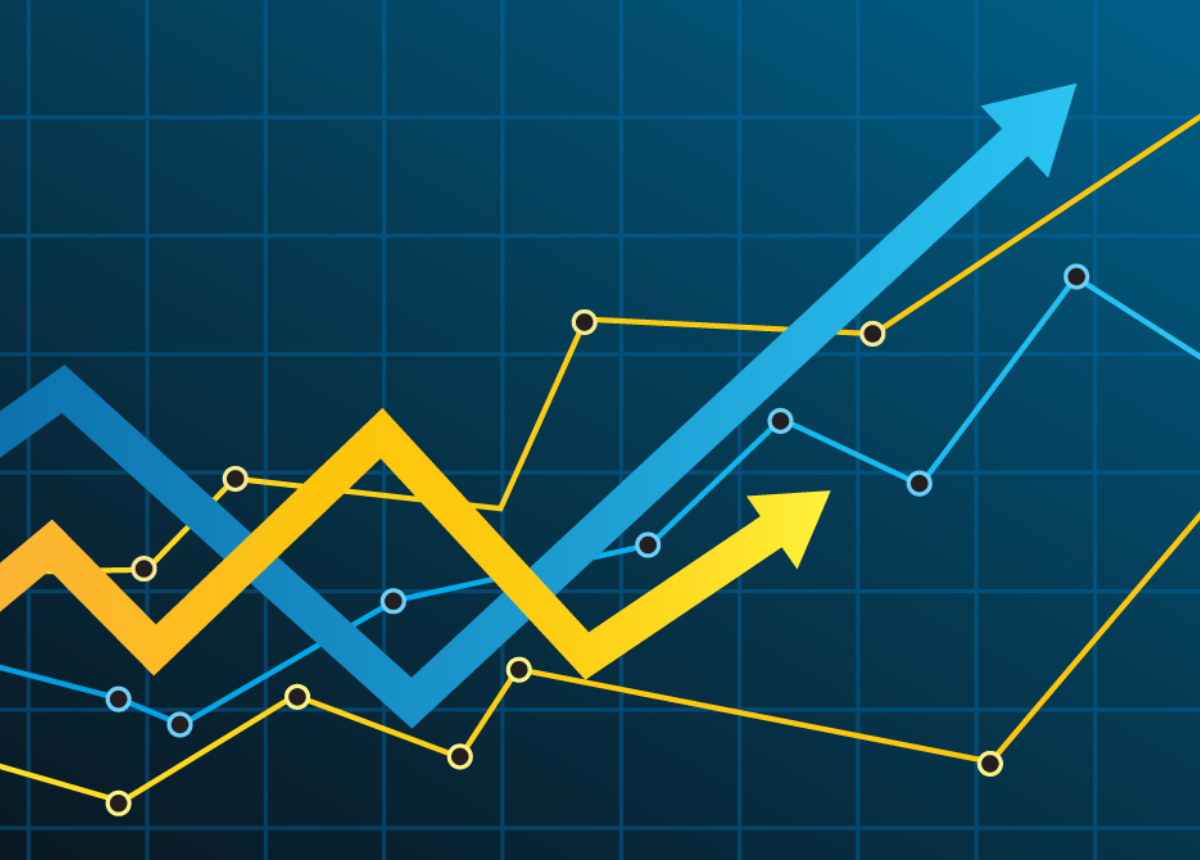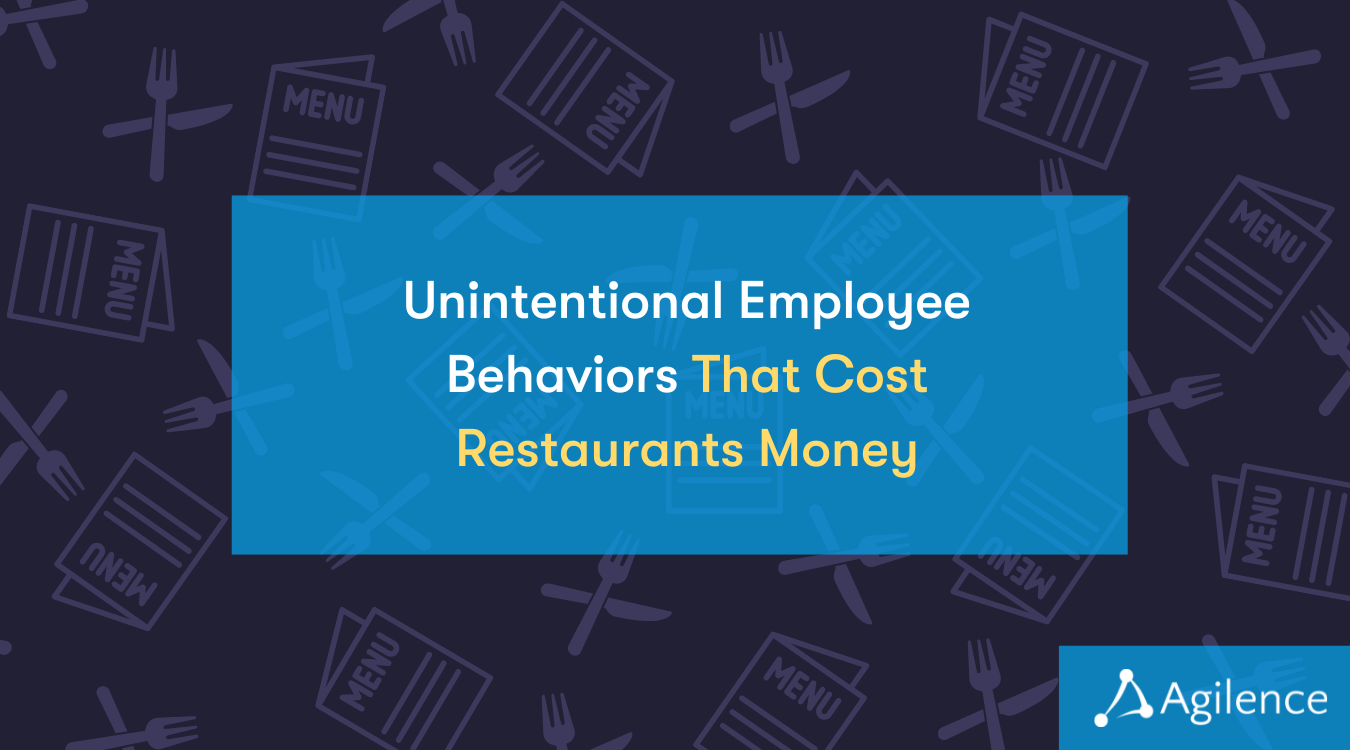How to Calculate and Control Restaurant Food Cost: Comprehensive Guide
Restaurant
When it comes to ensuring profitability for your restaurants, cost control is essential to hitting your margins. In 2023, every restaurant operator is concerned about inflation and rising costs, and with food being the largest variable cost your business has, controlling your food costs is more critical than ever.
Without precise food cost calculations, it can be difficult to keep a tight rein on expenses and set accurate menu prices. Inaccurate calculations can lead to an unpleasant surprise when profit margins don’t meet expectations or even worse – losses!
That’s why we’ve put together this comprehensive guide on the importance of food costs, how to calculate your restaurant’s food costs (both by plate cost and period cost), the ideal food cost percentage you want to reach, how to set menu prices, and how to control your restaurant costs to maximize your profitability. Let’s go!
What Is Restaurant Food Cost?
A restaurant’s food cost is made up of the total expense that a restaurant incurs to produce the food menu items sold to customers. This includes the cost of all raw ingredients, such as meat, poultry, seafood, vegetables, grains, herbs, and spices, as well as any prepared or packaged items used in the kitchen such as sauces, marinades, or dressings. You can also include kitchen supplies, equipment upkeep, labor costs involved in food preparation, packaging and waste management. Food cost calculations can help you determine the input cost of a single dish, a group of dishes, or your entire menu.
However, sometimes it’s more helpful to only calculate the cost of raw ingredients used in a dish, without accounting for additional costs such as packaging or labor. This is typically called your raw food cost. Raw food cost is often used to track ingredient costs and identify areas where a restaurant may be overspending on certain products.
Food cost is typically expressed as a percentage of the menu price, with the goal being to keep food cost under a certain threshold in order to maintain profitability. We’ll talk more about calculating your food cost percentage below.
Food Cost vs Cost of Goods Sold (COGS) vs Prime Cost
Food cost is related to yet different from other metrics such as COGS or prime cost. Whereas food cost refers to the cost of the ingredients that go into preparing a dish, COGS refers to the total cost of all the products sold by a restaurant, including not just food but also beverages and other items.
Food cost is one component of your COGS. COGS is helpful for measuring overall profitability, while food cost helps you drill down more to understand how much you are spending on ingredients and how much profit you are making on each individual menu item.
While food is one component of your COGS, your COGS is one component of your prime cost. Prime cost is a broader financial metric that refers to the sum of a restaurant's two largest costs: labor cost and COGS (including food cost).
All three metrics are important and closely related but provide different areas of focus on your restaurant’s profitability. You can think of them like the settings on a microscope, where different levels of magnification provide different levels of detail on the same observed item. Tracking food cost provides insight into the cost of individual ingredients, COGS provides insight into the total cost of all products sold, and prime cost provides an overall view of labor cost and COGS.
Why is food cost important?
Food cost is an essential metric for your restaurant because it directly impacts your profitability. A high food cost percentage means that your restaurant is spending too much money on buying ingredients and preparing menu items, reducing your profit margin, while a low food cost percentage generally indicates that the restaurant is managing its costs effectively and generating more profit from each sale.
By tracking food cost, you can identify areas where you can optimize your operations, such as negotiating better prices with suppliers, reducing food waste, or re-evaluating menu pricing. Since food cost is more specific than prime cost, you know where to look – if your food cost is too high, the issue is specifically within your ingredient sourcing and preparation costs relative to your menu pricing.
Moreover, food cost is a valuable tool for evaluating the performance of individual menu items. By tracking the cost of each ingredient used in a dish, a restaurant can determine the total cost to produce the item and compare it to the revenue generated from selling it. This can then be used to make decisions about menu changes, including adding, removing, or modifying menu items to ensure each dish is profitable.
How to Calculate Your Restaurant’s Food Cost
When doing restaurant food cost analysis, most restaurants use either period cost or plate cost to determine their food costs. Plate cost is best for when you’re determining the profitability of a dish or group of dishes, and you want to understand how much it costs your restaurant to make them. Period cost is used to calculate your total food costs over a given period of time so you can compare your spending on inputs over different time periods.
Plate cost
Plate cost refers to the cost of all raw ingredients required to produce a single menu item. This includes the cost of all food and beverage items used in a recipe, as well as any packaging or garnishments. Plate cost is calculated by adding up the cost of each ingredient used in a recipe and dividing it by the number of servings produced.
Here are the steps to calculating your plate cost for a given menu item:
- Create a recipe: Start by creating a recipe for the menu item you want to calculate the plate cost for. This recipe should include all the ingredients used in the dish, as well as the quantities needed for each ingredient.
- Determine the cost of each ingredient: Find out the cost of each ingredient needed for the recipe. This can be obtained by checking supplier invoices or market prices.
- Calculate the total cost of all ingredients: Multiply the quantity of each ingredient used in the recipe by its corresponding cost per unit, then add up the total cost of all ingredients.
- Add any additional costs: If there are any additional costs associated with the dish, such as packaging or garnishments, add these to the total cost calculated in step 3.
- Divide the total cost by the number of servings: Divide the total cost of the dish by the number of servings it produces to get the plate cost per serving.
For example, suppose a restaurant wants to calculate the plate cost for a spaghetti dish. The recipe calls for the following ingredients and quantities:
- Spaghetti noodles (8 oz): $0.50
- Tomato sauce (6 oz): $0.30
- Ground beef (4 oz): $0.80
- Seasonings (salt, pepper, garlic, etc.): $0.10
- Total ingredient cost: $1.70
If this recipe produces four servings, the plate cost would be $0.43 per serving ($1.70 ÷ 4).
Period cost
Period cost refers to the costs that are incurred by a restaurant over a specific period of time. Any category of item in your restaurant can be measured as a period cost. For food costs as a period cost, use the following formula used to measure COGS (as covered in our article on prime cost):
Food cost = Beginning Inventory + Purchases - Ending Inventory
Then, calculate your total food sales (not total sales – don’t include drinks, etc). You can see this data in your POS system. Finally, divide the food cost by food sales.
What is your restaurant’s food cost percentage?
Like with prime cost, restaurant food cost is most commonly expressed as a percentage rather than a raw number. To calculate the restaurant food cost percentage, you need to divide the total cost of ingredients used in a dish (or a group of dishes, or your whole kitchen) by the total revenue generated by that dish or group of dishes, and then multiply by 100. The formula for calculating food cost percentage is:
Food Cost Percentage = (Total Cost of Ingredients / Total Revenue) x 100
If you’re using plate cost, take the raw plate cost you ended up with above (how much it costs you to make a given menu item), divide it by the sales price of the item, and multiply by 100. This will give you the food cost percentage of that menu item. For example, let's say you sell a pasta dish for $20, and the total cost of ingredients used to prepare that dish is $7. To calculate the food cost percentage for this dish, you would use the formula above:
Food Cost Percentage = ($7 / $20) x 100 = 35%
This means that the cost of ingredients used in the pasta dish accounts for 35% of its sale price.
If you’re using period cost, then divide the number you ended up with above (your total cost of food ingredients/inputs) by your total revenue generated from food sales, and multiply by 100. For example, if your restaurant's total food costs for a month were $200,000 and the total revenue generated from food sales was $600,000, then the food cost percentage would be 33.3% ($200,000 ÷ $600,000 x 100).
Ideal restaurant food cost percentage
Now that you have your food cost percentage for a dish, group of dishes, or your whole menu, how do you interpret that number? Industry standards for food cost percentage can vary depending on the type of restaurant, location, and other factors. Here are the generally accepted ideal food cost percentages for different restaurant formats:
Quick Service Restaurants (QSRs): For QSRs, food cost percentage is generally between 25% and 30%, with some variations based on specific menu items. Since QSRs usually offer simple menus, their COGS is relatively low, which helps to keep the food cost percentage low.
Fast Casual: Fast-casual restaurants typically have slightly higher food cost percentages than QSRs. The industry standard for fast-casual restaurants is generally between 28% and 35%. This is because fast-casual menus tend to offer more premium ingredients and often more complex menu items.
Casual Dining: For casual dining restaurants, the industry standard for food cost percentage is between 30% and 35%. Casual dining restaurants serve more complex menu items and often use more expensive ingredients than fast-casual or QSR restaurants, which contributes to a higher overall food cost percentage.
Fine Dining: Fine dining restaurants typically have the highest food cost percentages. The industry standard for fine dining restaurants is generally between 30% and 40%, with some restaurants having even higher food costs due to the use of premium ingredients and specialized techniques.
When trying to set a realistic goal for your restaurant’s food cost percentage, using historical data can help. Agilence Analytics for restaurants can help you track historical data by restaurant to set and monitor goals for multi-location operators.
How to set menu prices based on food cost
Knowing your food cost can help you set menu prices that ensure you’re meeting your desired margins. Setting prices based on food cost percentage involves a simple calculation. Here's how it works:
- Determine the ideal food cost percentage for your restaurant, which varies depending on the type of restaurant as explained above.
- Calculate the raw food cost of each menu item by adding up the cost of all ingredients used in the recipe. For example, if a menu item contains $3 worth of ingredients, its raw food cost is $3.
- Divide the raw food cost by the ideal food cost percentage to get the ideal selling price for the menu item. For example, if the ideal food cost percentage is 30% and the raw food cost is $3, you would divide $3 by 0.30 (which is equivalent to 30%), giving you an ideal selling price of $10.
- Adjust the ideal selling price as necessary based on other factors such as competition, location, and customer demand. You may need to adjust menu pricing up or down based on these variables.
Remember, food cost percentage should only be one variable to inform your menu pricing strategy. Other considerations, such as the cost of labor, rent, equipment, and utilities, as well as customer demand and competition, should also be taken into account when setting menu prices. Analyze and adjust your menu regularly to ensure that menu items remain profitable.
How to Control Your Restaurant’s Food Costs
There are two ways to improve the profitability of your restaurants: improve sales and reduce costs. While minimizing all expenses is essential for maximizing profitability in a restaurant, food is the biggest variable cost for a restaurant and especially important to keep under control. Here are some strategies that restaurants can use to cut down on their food costs:
Begin a waste reduction program
Reducing the amount of food that ends up in a dumpster will reduce your food cost. Check out our guide on reducing food waste. We outline the actions to take to implement a waste reduction program, including:
- Conducting a waste audit and creating a waste log
- Getting on top of your inventory management, using the FIFO method, and improving your demand forecasting
- Managing your menu planning and portion control
- Proper storage and handling
- Staff training and getting buy-in
By following these steps, you will drastically reduce your food waste and lower your food costs. Remember, reducing food waste is an ongoing process of optimization, not just a one-time change. First, establish a baseline of your current waste and then improve over time.
Analyze and adjust your menu
One of the most useful applications of calculating your food costs is using it to maximize the profitability of your menu items with menu engineering. We discussed above how to set menu prices with your food cost, but you can also work backwards to determine which current dishes have a high food cost, then adjust them to reduce costs (such as by increasing the price or changing the recipe/ingredients).
Visibility into your food costs gives you insight into potential menu opportunities. If a low margin item is selling well, raising your food cost percentage, you can lower your cost by raising the item’s price or adjusting the portion size. If a high margin item is selling poorly, it may be time to promote the item. Balance your food cost against other data points such as sales to make data-driven decisions about your menu that improve your profitability.
Track food prices
Price inflation has become a global issue in recent years, and prices for many common staples are in flux. That’s why it’s critical to track food prices and understand whether the prices for your ingredients are projected to rise or fall in coming months. The USDA releases an annual Food Price Outlook with pricing predictions for common ingredients in the year ahead. Incorporating this into your projections can help you more accurately forecast your food cost and minimize unexpected cost increases which hurt your margins. Many ingredients can change prices on a seasonal basis, be sure to consider this in your menu planning as well.
Confirm the accuracy of vendor pricing
Vendor errors and changes in ordering and invoicing can be difficult to catch, yet commonly impact your food cost percentage. By using a tool like Agilence, you can monitor vendor pricing and flag invoices when they fall outside of an expected range, ensuring that you’re avoiding mistakenly overpaying for ingredients.
Track the variance between your actual food costs, theoretical food costs, and item sales
Theoretical food cost is what you expected your food costs to be, given the current and projected cost of all ingredients, over a period of time. Actual food cost is the real amount that your restaurant ended up spending on ingredients during that time. Tracking the difference between these two numbers helps you understand your shrinkage due to causes such as imperfect portion sizes, kitchen waste, incorrect vendor invoices, and employee theft. Then, comparing your actual food costs to what is actually sold can provide insight into items that are being over-ordered, poorly rotated, or stolen from the kitchen. Agilence Analytics for restaurants can help you track these numbers all in one place.
Monitor employee meals & other comped items
An unclear or unenforced policy around employee meals and comps can cause your food costs to unexpectedly rise. Make sure that you set thresholds for your employees’ meal discounts and other comps, communicate those expectations to your staff, and monitor follow-through. Agilence Analytics for restaurants can help you monitor and enforce your policy across locations.
Control internal theft
It’s not nice to think or talk about, especially during a time where finding good team members can be a challenge, but internal theft is a huge source of loss for many restaurants. Employee theft happens across a range of severity levels, from out-of-policy discounting and comps, to pocketing inventory items or extra meals, to altering sales in order to pocket customer payments.
Agilence helped one major national chain restaurant client save millions of dollars a year due to employees not charging for beverages to help boost their tip amounts. Learn more about restaurant employee theft.
To learn more about reducing your shrink and loss to save on food and other costs and improve your margins, check out our Restaurant Loss Prevention Blueprint and 9 Steps to Building an Efficient Loss Prevention Strategy.
Related Articles

How to Calculate and Control Your Restaurant’s Labor Costs
According to the National Restaurant Association, 89% of restaurant operators surveyed at the end of 2022 said that labor cos...
How to Calculate Year Over Year Growth
During the year, there are a number of metrics to track, and it’s easy to get sucked in and lose sight of the big picture. Bu...
Unintentional Employee (and Manager) Behaviors That Cost Restaurants Money
While employee theft is the biggest contributor to shrink in restaurants, it’s not the only employee behavior hurting restaur...Subscribe to our blog
Receive free educational resources like exclusive reports, webinars, and industry thought leadership articles straight to your inbox.

